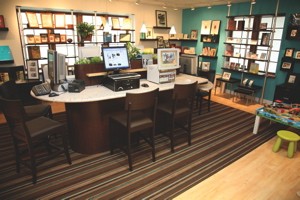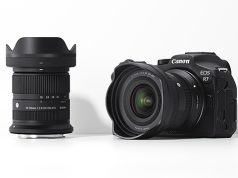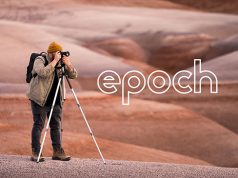
When it comes to prints, the 4×6-inch is still “King of the Lab.” But today’s savvy retailers are increasing their print business by offering customers a bevy of creative options for their photos, not to mention workstations that provide all the comforts of home.
Many retailers, such as Art’s Cameras Plus, are making a real effort to target “Jennifer,” the Gen-X mom featured in PMA’s Inspiration Center. “We recently opened our third retail store in the Milwaukee area and designed the new location to appeal specifically to PMA’s ‘Jennifer’, states Tony Miresse of Art’s Cameras Plus. Miresse worked with retail architect Mike Crosson of M. Crosson and Associates, whom he met at last year’s PMA’s Inspiration Center. Although photo prints account for less than 20% of his sales, Miresse decided to make a real effort to reach this important demographic.
“The centerpiece of our new store is the Digital Suite—a cozy room with 6 digital print workstations including two Lucidiom (Luci) machines. The suite’s color scheme, lighting, frame displays, coffee station, children’s play center, table top materials, and even stool height were carefully thought out to provide an atmosphere conducive to getting customers to relax and stay longer,” notes Miresse. “We let customers know they are welcome to spend as much time as they want, help themselves to complimentary coffee or tea, and ask for help with any part of the ordering process. This has resulted in customers focusing less on the price-per-print and returning frequently to order more prints. Our customers are very loyal to us and often bring friends to show them how to use the kiosks.”
Art’s Cameras Plus’ staff helps customers get familiar with the machines; they point out the extra features on the store’s APM’s and Luci machines that are not always found on kiosks in department or drug stores. “The goal,” says Miresse, “is to go beyond the 4”x6” and encourage enlargements, fancy borders and text, and to show customers how they can do more with their pictures by thinking outside the box. We’ve had great response to our Luci collage prints, and the scrapbook prints are catching on too.”
Miresse’s 16-year-old daughter has made some great digital scrapbook pages using the store’s Luci machine. “Now, whenever a friend has a birthday, she produces a special page complete with crazy pictures and text and puts it in a 10”x10” or 12”x12” frame. It is a reasonably-priced birthday gift for a teenager (around $20 retail for print and frame) and is always a big hit with her friends. We’ve displayed these throughout our three stores to give customers ideas on how to share their photos in a more creative way.”
Art’s Cameras Plus also has a kiosk that is a PC with Internet access, which allows staff to walk customers through the on-line ordering process. “This gives us an opportunity to showcase the many gift items we offer through the PRO Buying Groups imaging platform, such as hardcover photo books, all-season greeting cards, and woven photo blankets, as well as standard coffee mugs, photo calendars, etc. This will keep them coming back for more than just their photo printing,” states Miresse. “And because we are able to explain how a better camera can help customers be more successful with their photography, we’ve had many customers take their photography to the next level and replace their point-and-shoot digital cameras with DSLRs. This solidifies our reputation as the local photo experts and the place to go to satisfy your photographic needs, wants, and desires.”
Fine Art Reproductions
At Photographic Works in Tucson, Ariz., the target market is fine artists and fine art photographers. According to owner Mary Findysz, the lab purchased a D’Vinci printer last March because it was unable to reproduce certain colors as well as it wanted to, especially orange and green. “It’s challenging to reproduce artwork accurately, and not everyone is interested in doing that. But we really enjoy it and take it upon ourselves to accurately reproduce every color we possibly can,” states Findysz.
“I continually do research and this particular piece of equipment was perfect because we’re striving for exact color matches and the perfect print. (The D’Vinci) really has done the trick—that and the skill of our machine operator, Bill. Getting a feel for it is a learning process,” she notes. “It’s like buying the perfect violin and practicing until you get what you’re seeking.”
The lab uses the D’Vinci to print giclees on a variety of substrates including Arches Infinity and canvas. “You can put almost any substrate in the machine except anything that’s super glossy. The printer uses carbon black inks, which don’t stick to the glossy surfaces, but are archival up to 300 years. Most of the papers have a special coating so the ink adheres to it, but you can try whatever will fit in the machine. For reproduction of watercolors, canvas is perfect,” says Findysz, “but we continually test other papers such as exotic Japanese and rice papers, etc.”
Tapping the Scrapbook Market
Ashley Smith runs Polka Dot Potato, a scrapbooking store where she teaches Photoshop Elements classes, sells product, and hopes to close the gap between paper and digital scrapbooking. In addition, her Web site, www.polkadotpotato.com, which is dedicated to digital scrapbooking, offers customers printing services and product such as card kits, calendars, templates, albums, and even software.
“We concentrate on 12”x12” prints, though 8”x8” and 4”x8” cards are also popular,” says Smith. “Polka Dot Potato is a scrapbook store with a digital twist. Just like you have paper and embellishments in real life, you have those same items available digitally.” Customers design scrapbook pages with Photoshop Elements instead of using paper cutters, scissors, adhesive, etc. The store prints its page layouts using the Noritsu DP-100 Digital Dry Printer. The inkjet printer makes prints from 4”x6” to 12”x12” to 12”x36” panoramas. “We also have the (Noritsu) EasyLab software so people can upload their pictures from home. I love that because it allows us to fulfill online orders from around the world, as well as locally.”
At Scrapmasters in Bel Air, Md., customers can choose from a full range of prints including, 4”x6” to 12” x18” all printed using a Noritsu DVP 421. Although owner David Potts sees great growth in digital scrapbooking, he believes there’s a greater need in the market for specialty prints (wallet size photos, charms, and anything other than the standard fare) for traditional scrapbooking. “We recently introduced 6”x6” prints into our customer base and it’s a huge hit,” notes Potts. “We make more on 6”x6” than 4”x6” images even though we print thousands of 4”x6” prints each week. We do a lot with our lab that’s not traditional for scrapbooking, and our volume has been growing steadily.”
Show and Sell
“Our goal is to have our store filled with ideas,” states Gabrielle Mullinax of Fullerton Photographics, Inc., Fullerton, Calif., who considers herself fortunate to have a lot of creative people working for her. Fullerton Photographics, whose clientele includes a mix of Gen-X mom and boomers, is big on displays and has the sales figures that prove when you show customers what they can do with their photos, they jump right in. From poster size prints to scrapbooking pages to greeting cards, Fullerton Photographics does it all.
“We love our Epson 9800,” states Mullinax. “It’s the device we use for prints 11”x14” and larger because it can hold 44” wide surfaces. We print on watercolor, canvas, enhanced matt, and photo luster. We sell an awful lot of big prints from designs we create ourselves—such as four, 5-inch images on a 20×20 canvas—to canvases we create from someone’s African safari photos, etc.
“We’re really big on display; it helps us to share our visions and it generates so much interest.” For example, a 30”x40” full-wrap canvas of Venice, Italy, has brought in untold amounts of business, not to mention a few sales of the display print itself. “If they want to buy it right off the wall, they can,” says Mullinax. The store also utilizes the Lucidiom (Luci) Kiosk for scrapbooking pages. But instead of printing the standard size scrapbook pages, it prints 30”x30” scrapbook enlargement pages so customers can see they’re not limited to something that goes in a book.
“We also do lots of photo books,” says Mullinax, who notes that the interest is finally catching up with the talk. “A lot of people talked about it, but it was a hard product to produce. Next to our Digital Click Café (which has foot massagers under the kiosks), we have a workstation area called ‘Celebrate Your Life’. I installed photo book software and DVD movie software on the workstation about a year ago. We’re able to coach our customers through both the photo book and DVD movie creation right from the workstation. We don’t print the books ourselves; right now I’m outsourcing those but I am looking for an in-house solution.” The software is also on the store’s Web site so people can work from home then burn a CD and bring it in. “We’ll go through it with them, maybe make some changes, then order it (average price is $50).”
However, the number one item Fullerton Photographics is known for is its greeting card designs. Mullinax says she knew her customers wanted something more than the standard 4”x8”. So in 2003, she designed a multi-image, 5”x7” single-sided card with 3 drop-in places for images. That evolved into a folded card that the store previewed this year. “We probably sold close to 7,000 folded cards this year,” states Mullinax. “We’re really tickled with the response, to say the least.” The folded cards also hold up to three images, plus a thumbnail image on the back above the store’s logo. Since the multi-image folded card was so successful, the store then introduced a single image folded card with text. And yes, it too is a big winner.





